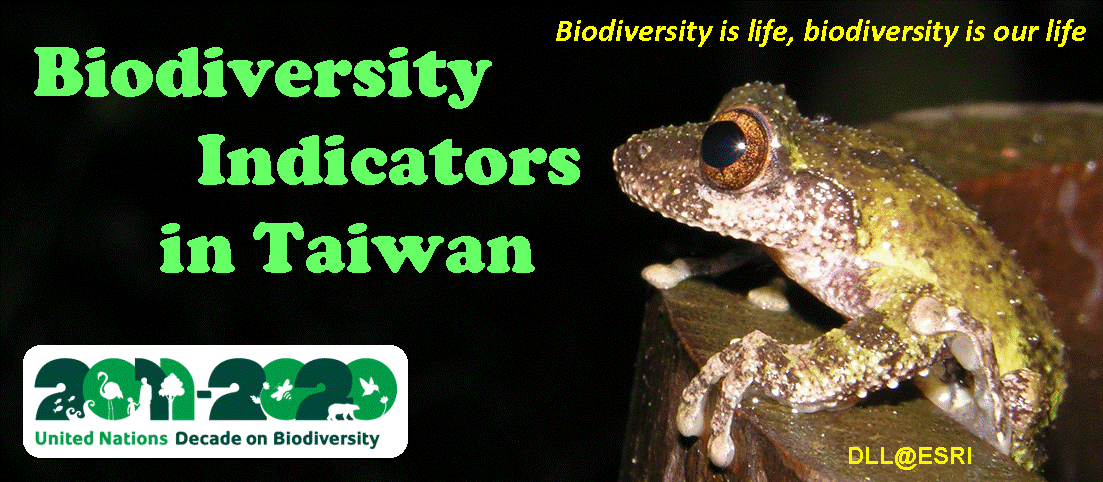四大類生物多樣性指標:狀態、壓力、反應、惠益,過去40年來的變化趨勢(陰影區表示95%的信賴區間)。
[Abstract]
In 2002, world leaders committed, through the Convention on Biological Diversity, to achieve a significant reduction in the rate of biodiversity loss by 2010. We compiled 31 indicators to report on progress toward this target. Most indicators of the state of biodiversity (covering species’ population trends, extinction risk, habitat extent and condition, and community composition) showed declines, with no significant recent reductions in rate, whereas indicators of pressures on biodiversity (including resource consumption, invasive alien species, nitrogen pollution, overexploitation, and climate change impacts) showed increases. Despite some local successes and increasing responses (including extent and biodiversity coverage of protected areas, sustainable forest management, policy responses to invasive alien species, and biodiversity-related aid), the rate of biodiversity loss does not appear to be slowing.
生物多樣性公約(Convention on Biological Diversity, CBD)秘書處在2020年訂下的「2010生物多樣性目標」,期望在2010年之前顯著減緩生物多樣性的流失速度,列入聯合國「禧年發展目標」(Millennium development Goal)重要項目之一,並且以31項指標檢視此目標的達成狀況。
但是,2010年檢視各締約國的生物多樣性國家報告後發現:(1)「生物多樣性狀態」相關指標(族群變化、滅絕率、棲地變化、群聚組成)呈現下降趨勢,劣化的趨勢並沒有顯著減緩。(2)「生物多樣性面臨的壓力」相關指標(資源耗損、外來入侵種、氮污染、過度開發、氣候變遷的衝擊)則呈現上升的趨勢。即使有些地區的成效呈現正向方展的趨勢,如保護區擴張、森林永續經營、政策調整,但是生物多樣性的流失狀況並未顯著下降。
過去四十年來,許多生物多樣性狀態的指標持續下降,包括:(1)脊椎動物、(2)棲地專一的鳥類、(3)全球水鳥族群、(4)森林、(5)紅樹林、(6)海草床、以及(7)珊瑚礁。如果將這些指標重新計算至1980年代,發現生物多樣性流失的狀況更為顯著。
為此,在2010生物多樣性公約第十屆的締約國大會,共同檢討「2010目標」的執行狀況,大幅修改各標題目標與策略目標的工作項目,重新訂了新的十年目標,稱為「愛知目標」(Aichi Targets),至遲於2020年顯著減緩生物多樣性的流失速度。
